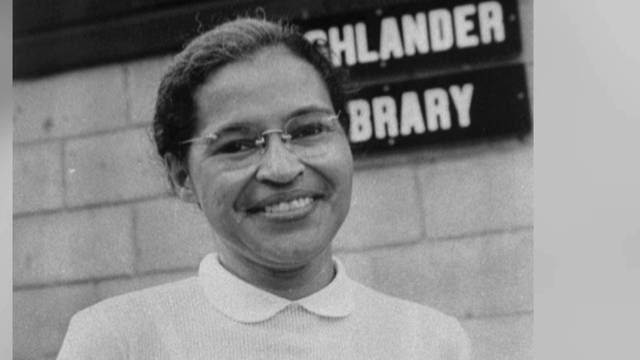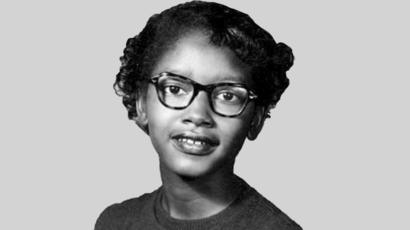Saying “No” Can Ignite a Movement

Rosa Parks, Civil Rights icon, would have been 107 today. Photo from Democracy Now.
Yesterday we celebrated not only the Parks’ birthday and Black History Month, but many other Black women who inspired others to challenge White supremacy in America. The total post volume was 138,000 with 137,900 posts from Twitter. Many focused on Parks’ birthday, hidden figures and showed leaders as everyday people who were frustrated with a racist system. The sentiment score was 76.9 percent positive.
Dec. 1, 1955
The event that occurred on the night of Dec. 1, 1955 is still considered one of the most influential moments in American history.
Rosa Parks was quietly siting down while riding a bus in Montgomery, Alabama. She just finished a long day’s work as a seamstress at the Montgomery Fair department store. Then James Blake, a White bus driver, ordered Parks and three other African Americans to the back to make room for a few Whites.
As many know, Parks looked Blake straight in the eye and said, “No.” She was then arrested and fined $10. Like many African Americans, Parks was frustrated with a system that privileged Whites over Blacks; and many communities of color as well. Thus, she firmly and gracefully fought back. Parks’ action was a catalyst for a chain of events in the South.
According to History.com, Parks stated, “People always say that I didn’t give up my seat because I was tired, but that isn’t true. I was not tired physically… No, the only tired I was, was tired of giving in.”
At the time, Black people were not allowed to sit in the front of the bus and were forced to the back to make room for Whites. According to History.com, over 70 percent of riders were Black at the time.
Past Racial Experiences
This was not Parks’ first experience with racism, like many African Americans during that time (and presently). Born on Feb. 4, 1913 in Tuskegee, Alabama, she frequently experienced racism. Biography.com reported Parks once saw her grandfather (a former slave) on the porch with a shotgun as the KKK marched by their house. Like many during her childhood, Parks attended a segregated school, which usually lacked school supplies such as poorly conditioned books and desks. After she married Raymond Parks in 1932, Parks earned her high school diploma. Afterwards, Parks was an active civil rights youth leader in the NAACP and was a secretary to the organization’s president, E. D. Nixon, prior to 1955.
Not The Whole Story

At 15-years-old, Claudette Colvin, refused to give up her seat on the bus. She stated White two men came over to forcibly removed her. Then one called Colvin a “thing” and the other kicked her. Photo from BBC.com.
Not The Whole Story
Rewind back to Dec. 1, 1955, Parks resistance caused 17,000 Black citizens to participate in the Montgomery Bus Boycott. The duration of the boycotts proved that Montgomery’s revenue depended on African Americans. However, while Parks act was an inspiration, she was not the first Black woman to refuse giving up her seat. One of the first to resist was Claudette Colvin when she was 15 years old, according to a 2009 NPR interview.
On March 2, 1955, Colvin refused to give up her seat, “All I remember is that I was not going to walk off the bus voluntarily.”
Now the question is why Parks gained national attention. According to Colvin, “Her skin texture was the kind that people associate with the middle class. She fit that profile.”
NPR reported Civil Rights leaders were thinking about the boycott for years, but they needed the right face for the movement. Additionally, they deemed Colvin’s as an unfit symbol due to her pregnancy.
Challenging Law
Not long after both women’s arrests for refusing to give up their seats, Aurelia S. Browder was also arrested. Browder, Susie McDonald, Claudette Colvin, Mary Louise Smith, and Jeanatta Reese then “challenged the Alabama state statutes and Montgomery, Alabama, city ordinances requiring segregation on Montgomery buses” in Browder v. Gayle. The Supreme Court ruled the statue was unconstitutional. Then a three-judge U.S. District Court panel ruled in a two-to-one vote that Alabama’s intrastate buses was unconstitutional June 5, 1956. Six months later, the U.S. Supreme Court affirmed the U.S. District Court’s decision Nov. 13, 1956. These formidable Black women (and many others) and their actions became the push the Civil Rights Movement needed.